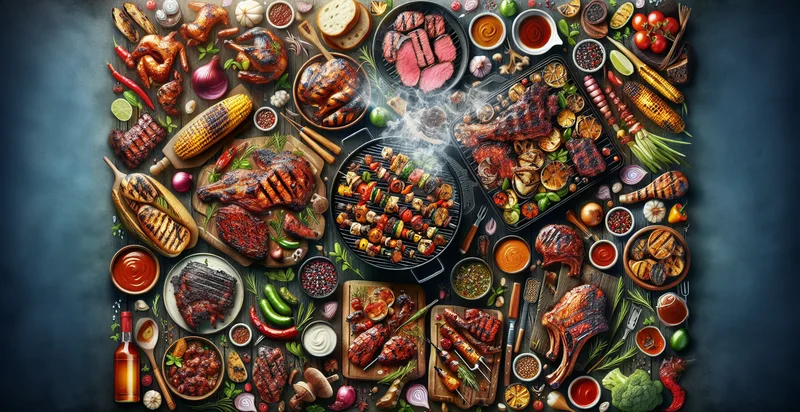Identify barbecue styles
using AI
Below is a free classifier to identify barbecue styles. Just input your text, and our AI will predict what barbecue style it represents - in just seconds.

Contact us for API access
Or, use Nyckel to build highly-accurate custom classifiers in just minutes. No PhD required.
Get started
import nyckel
credentials = nyckel.Credentials("YOUR_CLIENT_ID", "YOUR_CLIENT_SECRET")
nyckel.invoke("barbecue-styles", "your_text_here", credentials)
fetch('https://www.nyckel.com/v1/functions/barbecue-styles/invoke', {
method: 'POST',
headers: {
'Authorization': 'Bearer ' + 'YOUR_BEARER_TOKEN',
'Content-Type': 'application/json',
},
body: JSON.stringify(
{"data": "your_text_here"}
)
})
.then(response => response.json())
.then(data => console.log(data));
curl -X POST \
-H "Content-Type: application/json" \
-H "Authorization: Bearer YOUR_BEARER_TOKEN" \
-d '{"data": "your_text_here"}' \
https://www.nyckel.com/v1/functions/barbecue-styles/invoke
How this classifier works
To start, input the text that you'd like analyzed. Our AI tool will then predict what barbecue style it represents.
This pretrained text model uses a Nyckel-created dataset and has 20 labels, including Alabama, Arkansas, California, Carolina, Georgia, Illinois, Kansas City, Kentucky, Louisiana and Memphis.
We'll also show a confidence score (the higher the number, the more confident the AI model is around what barbecue style it represents).
Whether you're just curious or building barbecue styles detection into your application, we hope our classifier proves helpful.
Related Classifiers
Need to identify barbecue styles at scale?
Get API or Zapier access to this classifier for free. It's perfect for:
- Market Research Analysis: This function can be employed by market researchers to classify customer feedback and reviews related to various barbecue styles. By analyzing consumer sentiment and preferences, businesses can identify trending styles and flavors, enabling them to tailor their products accordingly.
- Menu Optimization: Restaurants specializing in barbecue can utilize this text classification function to analyze customer preferences about different barbecue styles. Insights from this analysis could assist in optimizing their menu offerings, ensuring they feature the most popular styles to drive sales and customer satisfaction.
- Social Media Monitoring: Businesses in the barbecue sector can implement this function to monitor social media conversations around different barbecue styles. This real-time analysis helps identify emerging trends and customer opinions, allowing businesses to engage with their audience effectively and adjust marketing strategies.
- Content Personalization: Online platforms focusing on barbecue recipes or grilling techniques can use this function to tailor content recommendations for users. By identifying preferred barbecue styles, platforms can enhance user experience and engagement by delivering personalized recipes and articles.
- Competitive Analysis: Companies can apply this classification function to evaluate competitors' branding and customer feedback regarding their barbecue offerings. Insights gained from this analysis can inform strategic decisions and help businesses identify gaps or opportunities in the market.
- Product Development: Food manufacturers can leverage this function to analyze consumer feedback on various barbecue sauces and marinades. Understanding consumer preferences in barbecue styles allows them to innovate and develop products that align with market demands, leading to successful launches.
- Event Planning: Event organizers can use the barbecue styles identifier to understand popular trends for food festivals or events. By analyzing preferences, organizers can curate select vendors or dishes that reflect the most sought-after barbecue styles, boosting attendee satisfaction and engagement.


